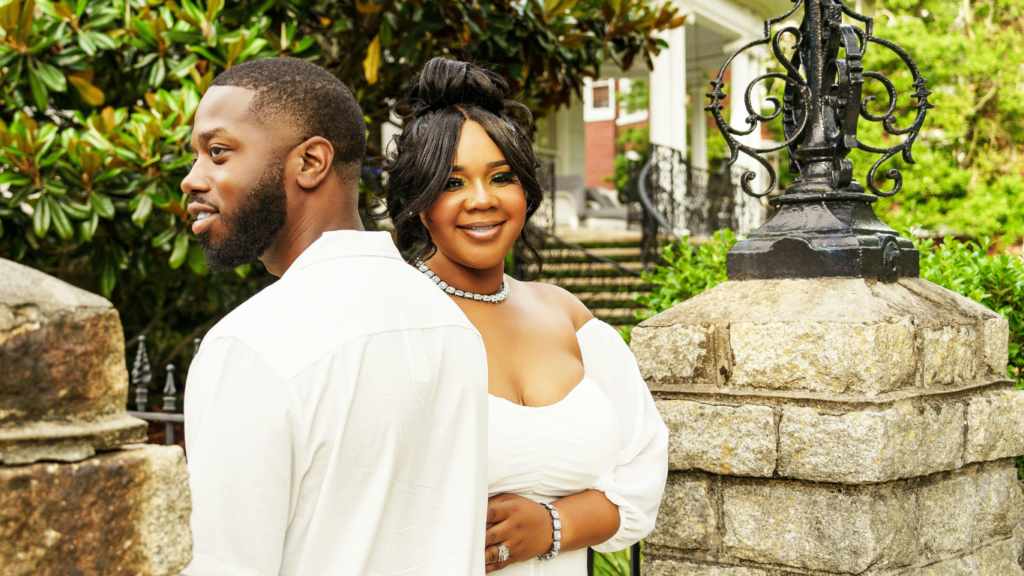Carlina Garner and New Orleans, LA: A Vibrant Tale of Culture and Connection

New Orleans, Louisiana, is a city that pulses with life, history, and an unmistakable cultural vibrancy. Known for its jazz-filled streets, Creole cuisine, and iconic Mardi Gras celebrations, the city is a melting pot of traditions and stories. Within this dynamic backdrop, the name “Carlina Garner” emerges, sparking curiosity about its connection to the Crescent City. This comprehensive exploration dives into the essence of Carlina Garner in the context of New Orleans, weaving together the city’s rich history, diverse culture, and tight-knit community spirit. Prepare to be captivated by a sensational and educational journey through the heart of New Orleans, LA.
Who is Carlina Garner? Unraveling the Connection to New Orleans
The name “Carlina Garner” may evoke various associations, but in the context of New Orleans, it’s essential to clarify its significance. Based on available information, there is no widely recognized public figure or historical icon explicitly named Carlina Garner directly tied to New Orleans. However, the name may relate to individuals, historical events, or cultural elements within the city’s vast tapestry. For instance, the surname “Garner” appears in significant historical contexts, such as the landmark Garner v. Louisiana case, which played a pivotal role in the Civil Rights Movement. Alternatively, Carlina could be a personal name linked to a resident, a fictional character, or even a misspelling of similar names like “Carolina” or “Carlina Rice,” as found in public records.
To provide a comprehensive view, let’s explore the potential connections while grounding the narrative in New Orleans’ cultural and historical landscape. Whether Carlina Garner represents an individual, a symbolic figure, or a point of intrigue, this blog post will illuminate the city’s essence through its people, traditions, and stories.
The Heart of New Orleans: A Cultural Mosaic
New Orleans is unlike any other city in the United States. Founded in 1718 by French colonists, it has been shaped by a blend of French, Spanish, African, and Creole influences, creating a unique cultural identity. The city’s nickname, “The Big Easy,” reflects its laid-back yet celebratory spirit, where music, food, and festivals are woven into daily life. To understand the context of Carlina Garner, we must first immerse ourselves in the elements that define New Orleans.
Music: The Soul of the City
New Orleans is the birthplace of jazz, a genre that emerged in the late 19th century from African American communities. The city’s streets, particularly in the French Quarter, resonate with the sounds of brass bands, second-line parades, and impromptu performances. Venues like Preservation Hall and Tipitina’s keep the jazz tradition alive, while modern artists blend it with hip-hop, funk, and bounce music.
Imagine Carlina Garner, perhaps a fictional resident, swaying to the rhythms of a second-line parade on a Sunday afternoon in the Tremé neighborhood. These parades, organized by Social Aid and Pleasure Clubs, are a testament to community resilience, bringing together locals to dance, sing, and celebrate life. The music of New Orleans is not just entertainment; it’s a cultural lifeline that connects generations.
Cuisine: A Flavorful Legacy
New Orleans’ culinary scene is a delicious reflection of its diverse heritage. From gumbo and jambalaya to beignets and po’boys, the city’s dishes tell stories of African, French, and Spanish influences. Iconic restaurants like Dooky Chase’s, run by the legendary Leah Chase and her family, have long served as cultural hubs, feeding both the body and soul. During Holy Thursday, locals flock to Dooky Chase’s for gumbo z’herbes, a tradition that underscores the city’s Catholic roots.
If Carlina Garner were a New Orleanian, she might be found savoring a muffuletta sandwich from Central Grocery or enjoying a plate of crawfish étouffée at a family-owned eatery. The city’s food culture fosters community, with shared meals at festivals, crawfish boils, and church gatherings reinforcing bonds among residents.
Festivals: Mardi Gras and Beyond
No discussion of New Orleans is complete without mentioning Mardi Gras, the annual carnival that transforms the city into a kaleidoscope of color, music, and revelry. Krewes, or social organizations, parade through the streets, tossing beads and trinkets to cheering crowds. The Zulu Social Aid and Pleasure Club, a historically Black krewe, is renowned for its vibrant floats and coveted coconut throws.
Beyond Mardi Gras, New Orleans hosts festivals like Jazz Fest, Voodoo Fest, and St. Joseph’s Day, which celebrates the city’s Sicilian heritage with elaborate altars adorned with food and flowers. These events highlight the city’s multicultural fabric, where communities come together to honor their roots. Carlina Garner, whether real or imagined, could be pictured joining the festivities, perhaps donning a feathered mask or dancing in a Mardi Gras Indian parade, a tradition that pays homage to Native American and African resilience.
The Historical Tapestry of New Orleans
New Orleans’ history is a complex narrative of triumph, struggle, and cultural fusion. To contextualize Carlina Garner, let’s explore key historical moments that have shaped the city and its people.
Colonial Roots and the Louisiana Purchase
Founded as a French colony, New Orleans became a Spanish territory before being sold to the United States in the 1803 Louisiana Purchase. Its strategic location along the Mississippi River made it a vital port, attracting immigrants from Europe, Africa, and the Caribbean. The city’s early years were marked by the transatlantic slave trade, which brought enslaved Africans whose labor and culture profoundly influenced New Orleans. The Code Noir, a set of laws governing slavery, required slaves to be baptized in the Catholic faith, laying the foundation for the city’s Afro-Creole identity.
The Civil Rights Movement: Garner v. Louisiana
The surname “Garner” is notably linked to the 1961 U.S. Supreme Court case Garner v. Louisiana, a landmark in the Civil Rights Movement. In 1960, sixteen Southern University students, including John Burrell Garner, were arrested in Baton Rouge for staging sit-ins at segregated lunch counters. Trained by the Congress of Racial Equality (CORE), these students practiced nonviolent civil disobedience to challenge Jim Crow laws. The Supreme Court’s ruling in their favor affirmed the constitutional right to protest, paving the way for the Civil Rights Act of 1964.
While this case occurred in Baton Rouge, its impact resonated in New Orleans, where similar protests took place. The students’ courage inspired Black New Orleanians to continue fighting for equality, shaping the city’s activist legacy. If Carlina Garner were a descendant or symbolic figure tied to this history, she might represent the enduring spirit of resistance and justice.
Vietnamese Migration and Resilience
In the 1970s, New Orleans became home to a vibrant Vietnamese community following the fall of Saigon. The Historic New Orleans Collection’s exhibition, Making It Home: From Vietnam to New Orleans, showcases their journey through oral histories, photographs, and artifacts. Elders recount fleeing war-torn Vietnam and rebuilding lives in New Orleans East, where they established thriving businesses and cultural traditions like Tết celebrations.
This narrative of resilience could intersect with Carlina Garner if she were part of a modern, multicultural New Orleans family, perhaps with ties to both African American and Vietnamese communities. The city’s ability to embrace diverse cultures underscores its role as a haven for those seeking a new home.
Community Spirit: The Backbone of New Orleans
New Orleans is a city of neighborhoods, each with its own character and sense of community. From the historic French Quarter to the resilient Ninth Ward, these areas are defined by the people who call them home. The concept of Carlina Garner could symbolize the everyday New Orleanians who contribute to this communal spirit.
The French Quarter: A Cultural Epicenter
The French Quarter, with its French and Spanish Creole architecture, is the heart of New Orleans’ cultural scene. Bourbon Street pulses with nightlife, while Royal Street hosts art galleries and street performers. The Historic New Orleans Collection, located at 520 Royal Street, preserves the city’s history through exhibitions on Mardi Gras, Vietnamese immigration, and more.
Carlina Garner might be imagined as a local artist showcasing her work in the French Quarter, drawing inspiration from the city’s vibrant colors and sounds. The Quarter’s blend of history and modernity makes it a fitting backdrop for stories of creativity and connection.
Tremé: The Birthplace of Jazz
Tremé, one of the oldest African American neighborhoods in the U.S., is a cradle of New Orleans’ musical heritage. Home to Congo Square, where enslaved Africans once gathered to perform music and dance, Tremé remains a hub for jazz and second-line parades. The Backstreet Cultural Museum, founded by Sylvester Francis, documents these traditions through photographs and artifacts, offering a glimpse into the city’s Black cultural legacy.
If Carlina Garner were a Tremé resident, she might be involved in preserving these traditions, perhaps as a member of a Social Aid and Pleasure Club or a volunteer at the museum. Tremé’s community pride and resilience embody the spirit of New Orleans.
New Orleans East: A Multicultural Hub
New Orleans East, home to the city’s Vietnamese community, is a testament to cultural diversity. Markets, restaurants, and festivals like Tết celebrate Vietnamese heritage while integrating with the broader New Orleans culture. The area’s recovery from Hurricane Katrina highlights the strength of its residents, who rebuilt their lives with determination.
Carlina Garner could represent a young New Orleanian navigating this multicultural landscape, perhaps blending Vietnamese and Creole traditions in her daily life. The community’s unity and adaptability reflect the city’s broader ethos.
The Legacy of Resistance and Resilience
New Orleans has faced numerous challenges, from hurricanes to systemic inequality, yet its people have consistently risen above adversity. The city’s history of resistance, from the Civil Rights Movement to post-Katrina recovery, is a testament to its unbreakable spirit.
Hurricane Katrina and Recovery
In 2005, Hurricane Katrina devastated New Orleans, displacing thousands and exposing deep-seated inequalities. The storm’s aftermath saw heroic efforts by residents to rebuild, with community organizations and volunteers leading the charge. The Ninth Ward, heavily impacted, became a symbol of resilience, with initiatives like the Black Panther Party’s breakfast programs inspiring grassroots activism.
Carlina Garner, as a hypothetical figure, might be a community organizer in the post-Katrina era, working to restore her neighborhood and preserve its cultural heritage. Her story would reflect the collective strength of New Orleanians.
Modern Challenges: The 2025 Terror Attack
In January 2025, New Orleans faced a tragic terror attack, highlighting the city’s ongoing challenges with safety and security. Despite this, the community rallied, with mental health counselors offering support and residents coming together to heal. Posts on platforms like Reddit’s r/NOLA subreddit emphasized the city’s resilience, with locals sharing stories of kindness and solidarity.
This event underscores the importance of community in times of crisis. Carlina Garner could symbolize the everyday heroes who support their neighbors, reinforcing New Orleans’ reputation as a city that endures.
Why New Orleans Captivates: A Sensational Conclusion
New Orleans is a city that defies simple description. Its music, food, festivals, and history create a sensory experience that lingers long after a visit. Whether Carlina Garner is a real person, a historical reference, or a symbolic figure, her connection to New Orleans invites us to explore the city’s soul. From the jazz-filled streets of Tremé to the vibrant markets of New Orleans East, every corner tells a story of culture, resilience, and community.
As you plan your visit or dive deeper into New Orleans’ history, let the city’s spirit inspire you. Wander the French Quarter, savor a bowl of gumbo, or join a second-line parade—each experience is a celebration of life. The Historic New Orleans Collection, Backstreet Cultural Museum, and other institutions offer rich resources to learn more, while the city’s neighborhoods welcome you with open arms.
New Orleans is more than a destination; it’s a way of life. Whether you’re drawn to its past, present, or future, the Crescent City promises a journey unlike any other. So, come for the music, stay for the stories, and let New Orleans, LA, steal your heart.



